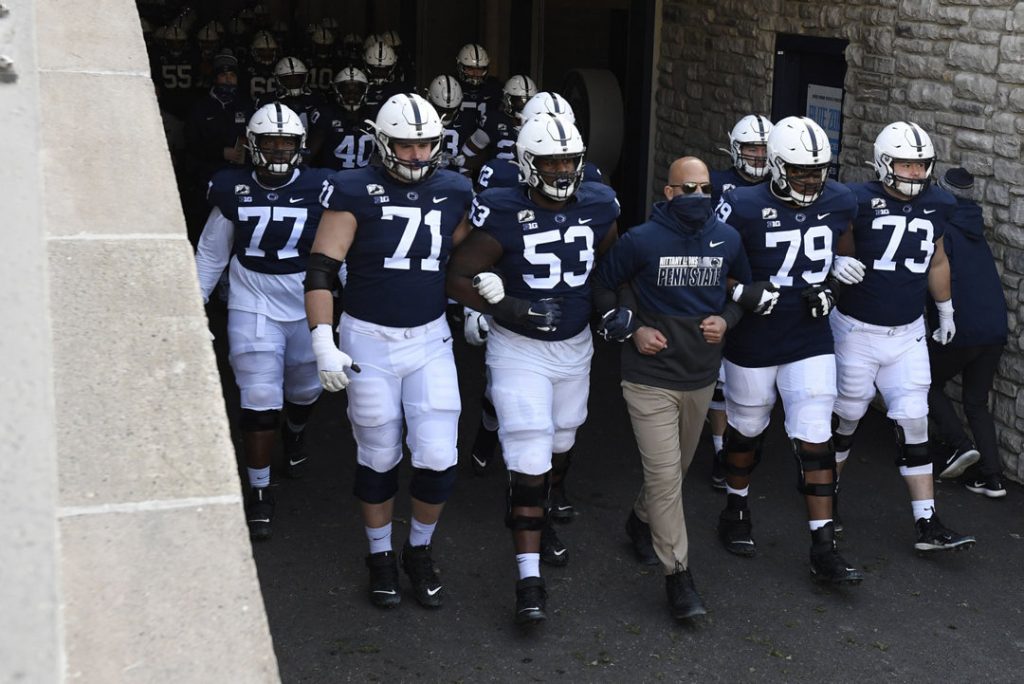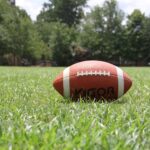James Franklin might have the answer to a question he answered last week, from the higher power he sought.
Winter conditioning and workouts will go on, as planned, for Penn State’s football team, the university’s Vice President for Intercollegiate Athletics Sandy Barbour confirmed Tuesday. Plans depend on many of the typical stipulations that go with operating under the cloud of COVID-19, of course, but Barbour’s words gave a significant push to Franklin’s hopes for a return to a greater degree of normalcy for the program in preparation for the 2021 season.
The NCAA allows teams to hold 15 practices during the spring semester, and Penn State’s typically start in March.
“We’re going to continue to do that unless the conditions change and it’s not safe or super healthy for us to do it,” Barbour said.
Penn State canceled spring practice last March in the initial days of the coronavirus pandemic, and Barbour remained careful to maintain that all sports plans are tentative in nature during a pandemic.
She said it is still too early to determine the status of the Blue-White Game, the spring-practice-ending scrimmage that draws about 70,000 fans to Beaver Stadium in April. She noted that, if it were held today, the game would be limited to only about 2,500 fans.
“We’re going to have to get a lot closer to what the timeframe would be before we can really decide if we’re going to have a Blue-White Game and what that might look like,” she said, adding that the Nittany Lions have been ahead of the curve when it comes to keeping the virus at bay and pressing on with plans safely.
The Lions were one of only two teams in the Big Ten that played all nine of their scheduled games, and Barbour said Tuesday they did so with just one positive test recorded within the program. It came from someone who contracted the virus from someone outside the program, according to Barbour.
For that, she credited the mitigation efforts put in place by the university and the Big Ten. But, she said perhaps the biggest reason for that public health success was the example set by Franklin, the head coach who preached a no-nonsense approach to social distancing, mask-wearing and self-discipline that players bought into for a chance to compete.
“It was because James led the way, James modeled the behavior, James held them accountable, and the guys all bought in,” Barbour said. “In my mind, he made a statement about how important health and safety is, and how important following the rules are, and that he’s not just a football coach and not just interested in what happens on the field. He’s interested in being a citizen of our society, and being a damn good one.”
Of course, Penn State has millions of reasons to want football to proceed safely.
Barbour said the athletic department avoided the gargantuan estimated shortfalls — nearly $90 million to $100 million — she forecasted as possible in September, thanks to salary reductions, furloughs, not filling several open positions and dipping into ample financial reserves. Still, she estimated a gap of between $20 million and $25 million in lost revenue for the athletic department during the pandemic.

Donnie Collins has been a member of The Times-Tribune sports staff for nearly 20 years and has been the Penn State football beat writer for Times-Shamrock Newspapers since 2004. The Penn State Football Blog covers Nittany Lions, Big Ten and big-time college football news from Beaver Stadium to the practice field, the bowl game to National Letter of Intent Signing Day. Contact: dcollins@timesshamrock.com; 570-348-9100 x5368; @DonnieCollinsTT



